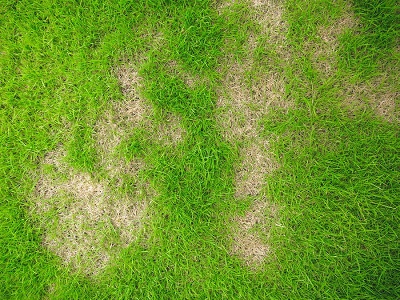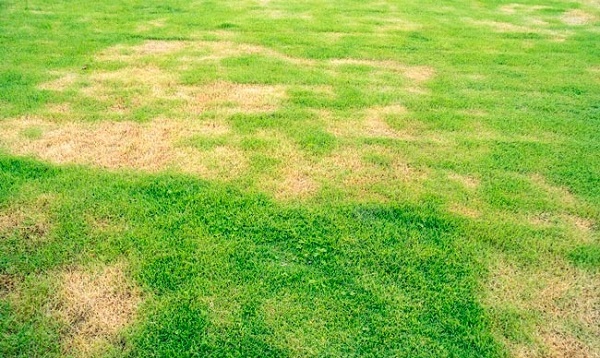The Fungus Among Us: What Causes Fungus on Lawns
Your lawn, a lush green expanse that should be a source of pride, may sometimes fall victim to an unwelcome guest: lawn fungus. Those unsightly, discolored patches can be frustrating, but understanding the enemy is the first step to combat it. So, what causes fungus on lawns, and how can you regain your lawn’s health and beauty?
Understanding Lawn Fungus
Fungus is the primary villain behind those annoying lawn troubles. It’s a type of parasitic organism that thrives in humid and warm conditions, making your lawn a prime target. But why does fungus decide to set up camp in your yard? Let’s explore the factors that contribute to fungal infestations.
1. Moisture Madness
Fungus revels in moisture. When your lawn remains wet for extended periods, either from heavy rain, overwatering, or inadequate drainage, it creates the perfect breeding ground for these unwelcome guests. Overwatering is a common culprit, as it leads to waterlogged soil and promotes fungal growth.
Signs to Watch For Excessive moisture on your lawn, puddles, or waterlogged soil are clear signs of a moisture issue.
Solution: Ensure proper drainage, water your lawn in the morning to allow it to dry during the day, and avoid overwatering.
2. Shade
Shade is another factor that can contribute to fungal problems. While your lawn needs sunlight to thrive, shaded areas with limited sun exposure can become more susceptible to fungus. Inadequate sunlight prevents the grass from drying properly and creates a damp environment conducive to fungal growth.
Signs to Watch For Thinning grass, moss growth, and the presence of mushrooms are indicators of shade-related issues.
Solution: Prune overhanging trees or shrubs to allow more sunlight to reach the lawn. Consider planting shade-tolerant grass varieties in these areas.
3. Poor Air Circulation
A lack of proper air circulation can trap moisture and create an environment where fungi can thrive. This is especially common in tightly packed lawns or areas surrounded by structures or dense vegetation.
Signs to Watch For: Stagnant air, high humidity, and limited airflow are signs of poor circulation.
Solution: Prune back shrubs, and trees, and remove any obstructions that hinder airflow. Consider aeration to improve circulation within your lawn.
4. Soil Health
The condition of your soil plays a significant role in fungal growth. Compacted or poor-quality soil can retain excess moisture, creating an ideal environment for fungus.
Signs to Watch For: Compacted soil, water pooling on the surface, and poor grass growth.
Solution: Regular soil testing can help you understand your soil’s health. Consider aerating your lawn to improve soil structure and drainage.
5. Lawn Thatch
Thatch, a layer of dead grass and organic matter, can accumulate on your lawn over time. While some thatch is normal, excessive thatch can create a favorable environment for fungus.
Signs to Watch For: Spongy or overly soft grass, visible layers of thatch.
Solution: Dethatch your lawn as needed to remove excessive thatch buildup.
6. Fertilizer Misuse
Improper use of fertilizers, especially nitrogen-rich ones, can contribute to fungal issues. Nitrogen promotes lush, dense grass growth, but an excess can weaken the grass and make it more susceptible to disease.
Signs to Watch For Excessive grass growth, dark green color, and weakening grass.
Solution: Follow recommended fertilization guidelines and avoid over-fertilizing. Choose a balanced fertilizer with the right N-P-K ratio for your lawn.
7. Grass Variety
The type of grass you have can influence its susceptibility to fungus. Some grass varieties are more resistant to fungal diseases, while others are more vulnerable.
Signs to Watch For: Frequent fungal issues despite good lawn care practices.
Solution: Choose grass varieties that are suitable for your region and known for their resistance to common fungal diseases.
Eradicating Lawn Fungus: Strategies for a Fungus-Free Lawn
Now that you’re well-versed in the signs and causes of lawn fungus, it’s time to roll up your sleeves and tackle the issue head-on. Here’s how to eliminate lawn fungus and restore your lawn to its former glory:
1. Proper Lawn Maintenance
Regular Mowing: Keep your grass at the recommended height for its variety and make sure your mower blades are sharp.
Aeration: Improve air circulation by aerating your lawn. This helps prevent thatch buildup.
Dethatching: Remove thatch that’s more than half an inch thick.
2. Fungicides
- Chemical Control: If the fungus is severe, you might need to use a fungicide. Consult with a professional or your local nursery to determine the best product for your situation.
3. Watering Practices
Proper Watering: Water your lawn early in the morning to allow grass to dry during the day. Avoid evening watering, which can leave grass damp overnight.
Deep and Infrequent: Instead of shallow, frequent watering, water your lawn deeply and less often to encourage grass roots to grow deeper.
4. Remove Infected Material
Clean Up: Regularly clean up clippings, leaves, and other debris from your lawn to minimize potential fungal habitats.
Pruning: If you see fungus on a plant or tree near your lawn, address it promptly to prevent further contamination.
5. Improve Soil Health
Soil Testing: Conduct a soil test to identify any nutrient deficiencies and take steps to amend your soil as necessary.
Fertilize: Apply a balanced, slow-release fertilizer to encourage grass health and vigor.
6. Natural Remedies
Neem Oil: Neem oil is a natural fungicide that can help control some fungal infections.
Baking Soda: A mixture of baking soda and water can be effective for certain types of fungus.
Cornmeal: Applying cornmeal to your lawn may help combat some fungal diseases.
The Battle Against Lawn Fungus

Lawn fungus can be a formidable foe, but armed with knowledge and a solid strategy, you can win the battle. Keep a watchful eye on your lawn’s health, implement preventive measures, and be ready to address any fungal invasions promptly. With your newfound understanding of what causes fungus on lawns, you’re equipped to protect and nurture your green oasis.
May your lawn remain vibrant, resilient, and free from the clutches of fungal invaders.
FAQs on What Causes Fungus on Lawns
We’ve explored the mysterious world of lawn fungus, but you might still have some questions. Here are answers to common queries about fungal issues on lawns.
Is all fungus harmful to lawns?
Not all fungi are harmful to lawns. In fact, many types of fungi are beneficial for soil health and decomposition. However, certain fungal diseases can harm your lawn, and these are the ones you should be concerned about.
How can I tell if my lawn has a fungal problem?
Watch for signs such as discolored patches, unusual growth patterns, and the presence of mushrooms. If you notice these signs, investigate further and consider consulting with a lawn care expert.
Are there organic ways to control lawn fungus?
Yes, there are organic methods to control lawn fungus. These include improving soil health, enhancing lawn care practices, and using organic fungicides. Organic treatments are often effective and environmentally friendly.
How often should I aerate my lawn?
The frequency of lawn aeration depends on your soil and lawn condition. In general, it’s recommended every 1-3 years. However, you might need it more often if your lawn has compacted soil or poor drainage.
Can I use homemade remedies to control lawn fungus?
Homemade remedies like baking soda or neem oil can sometimes be effective against fungal issues. However, their success may vary, and it’s essential to use them correctly. Commercial fungicides are usually more reliable.
Will adjusting my watering schedule help prevent fungus?
Yes, adjusting your watering schedule is crucial for preventing fungus. Water your lawn in the morning to allow it to dry during the day. Avoid evening watering, which can leave the grass damp overnight and promote fungal growth.
Can I plant grass seed in areas affected by fungus?
It’s generally not recommended to plant grass seed in areas affected by fungus until the issue is resolved. The fungus can harm new seedlings, and it’s best to treat the problem before overseeding.
How do I choose the right grass variety for my region?
To choose the right grass variety, consider factors like your region’s climate, soil type, and sunlight conditions. Consult with a local nursery or lawn care professional for guidance on the best grass types for your area.
Are there any early warning signs of a fungal problem on my lawn?
Early warning signs may include small, discolored patches of grass or unusual growth patterns. Keep a close eye on your lawn’s health, and when you notice anything unusual, investigate promptly.
Can I prevent all types of lawn fungus?
While proper lawn care practices can significantly reduce the risk of fungal problems, it’s challenging to prevent all types of lawn fungus entirely. Some environmental factors may be beyond your control, but vigilant maintenance can minimize the risk.
Conclusion
In the quest for a beautiful, lush lawn, dealing with lawn fungus can be a frustrating setback. However, with the knowledge of the signs, causes, and effective solutions, you can ensure your grass remains healthy and fungus-free.
Remember, maintaining a well-drained, well-ventilated lawn is essential to keep fungi at bay. Regular lawn care practices, such as proper watering, mowing, and aeration, will help create an environment where your grass can thrive, and fungus struggles to take hold.
By following these strategies and remaining diligent in your lawn care routine, you’ll be well-equipped to tackle what causes fungus on lawns and keep your lawn vibrant, green, and inviting for all to enjoy. Your outdoor paradise awaits, and with the right knowledge, you can make it a reality. Happy gardening!

